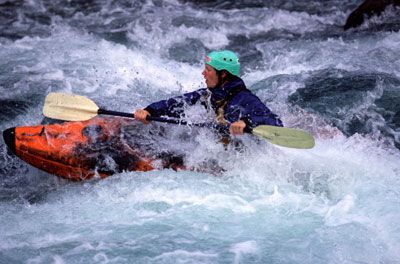Paddling down a scenic river in the summer breeze, sharing an adventure with family and friends, sea kayaking with killer whales -- it's easy to understand why the range of possibilities makes kayaking such a popular sport. But all kayakers face one issue: how to get the boat to the water.
Many kayakers attach their boats to the top of their vehicles for transport, and boating supply stores sell a variety of products for car-top transport. Foam blocks are inexpensive and ideal for short trips in good weather, while rooftop racks are pricier, more secure and often easier to use. Rooftop racks are a good choice for kayakers who make longer trips, drive on the highway where speed limits are higher or who may be driving in high winds. And these racks are more versatile than foam blocks -- you can use them to carry other sports equipment like skis, surfboards and bicycles.
Advertisement
Kayakers must use saddles, j-cradles or stackers to attach their boats to rooftop racks. Saddles fit along the bottom of the boat at the bow and stern and are designed for transporting the kayak right side up. J-cradles, on the other hand, carry the kayak on its side, a position that's less likely to deform a plastic boat and one which allows you to carry more than one kayak side-by-side on a narrow roof. Stackers also carry kayaks on their sides and allow you to stack more than one boat in a single stacker. But some kayakers bypass the roof altogether and pull their boats behind their vehicle in a trailer.
Whether you choose to use foam blocks, a rooftop rack or a trailer depends on many factors, including what type of kayak you have, what vehicle you drive and how many boats you want to transport. Choosing the right equipment and using it the right way will help you enjoy your excursions and save you money by preventing damage to your boat and car.
Read on to learn more about rooftop racks for your kayak.
Advertisement


